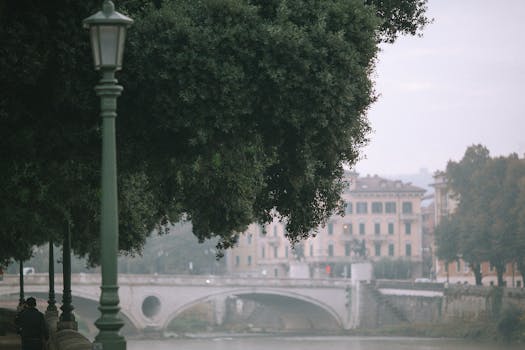
Urban Green Spaces: The Future of Outdoor Living in European Cities by 2025
Urban green spaces are becoming increasingly important in European cities as they provide a range of benefits for both the environment and the people who live in them. From reducing air pollution to improving mental health, these green oases are shaping the future of outdoor living in cities across the continent. In this article, we will explore the importance of urban green spaces, the benefits they provide, and how they are being incorporated into urban planning in European cities.
What are Urban Green Spaces?
Urban green spaces refer to areas of greenery in urban environments, such as parks, gardens, and green roofs. These spaces can be found in a variety of locations, from city centers to suburban neighborhoods, and can range in size from small community gardens to large national parks. Urban green spaces are important because they provide a range of ecosystem services, including air and water filtration, soil formation, and climate regulation.
Benefits of Urban Green Spaces
Urban green spaces provide a range of benefits for both the environment and the people who live in them. Some of the most significant benefits include:
- Reduced air pollution: Urban green spaces can help to reduce air pollution by absorbing pollutants and producing oxygen.
- Improved mental health: Spending time in nature has been shown to have a positive impact on mental health, reducing stress and anxiety.
- Increased biodiversity: Urban green spaces can provide a habitat for a range of plant and animal species, increasing biodiversity in urban areas.
- Climate regulation: Urban green spaces can help to regulate the climate, providing shade and cooling the air through evapotranspiration.
- Recreation and leisure: Urban green spaces provide a range of recreational activities, such as walking, cycling, and picnicking, which can improve physical and mental health.
Urban Planning and Green Infrastructure
Urban planning plays a critical role in the development and maintenance of urban green spaces. Green infrastructure, such as green roofs, green walls, and urban forests, is being incorporated into urban planning in European cities to provide a range of benefits, including reduced stormwater runoff, improved air quality, and increased biodiversity. Cities such as Copenhagen, Stockholm, and Amsterdam are leading the way in urban green space planning, with a focus on creating sustainable, livable, and resilient cities.
Case Studies: Urban Green Spaces in European Cities
There are many examples of urban green spaces in European cities that are providing a range of benefits for both the environment and the people who live in them. Some examples include:
- The High Line in London: An elevated park built on an old rail line, providing a green oasis in the heart of the city.
- The Park de la Ciutadella in Barcelona: A large urban park that provides a range of recreational activities, including boating, cycling, and walking.
- The Amsterdamse Bos in Amsterdam: A large urban forest that provides a habitat for a range of plant and animal species, as well as recreational activities such as cycling and walking.
Conclusion
Urban green spaces are a critical component of sustainable, livable, and resilient cities. By incorporating green infrastructure into urban planning, European cities can provide a range of benefits for both the environment and the people who live in them. As we look to the future, it is clear that urban green spaces will play an increasingly important role in shaping the future of outdoor living in European cities by 2025.






